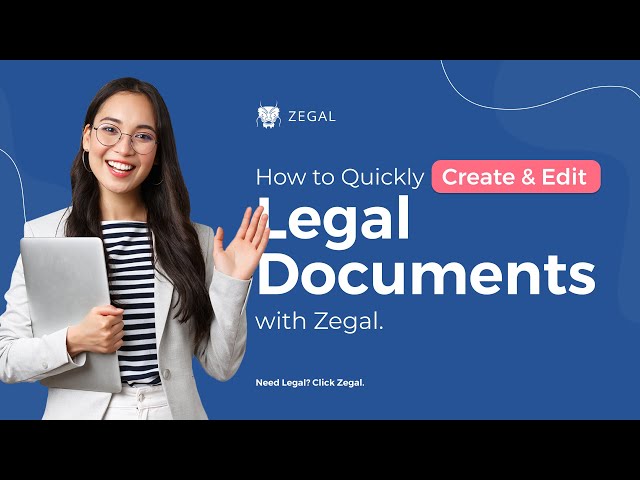How to generate a Facility Agreement

A Facility Agreement is a Loan Agreement. This is a contract between a borrower, who is looking for money and a lender, who is willing to provide the capital to the borrower.
Additionally, a commercial facility agreement is one by which a company acts as a borrower. Conversely, a personal loan is secured by the income and assets of the individual requesting a loan. In all cases, lenders will want assurance of repayment. Thus, a facility agreement is essential for this.
In essence, a loan can be secured or unsecured. But, in the case of a secured document, additional security documents are required.
What is in a Facility Agreement?
Essentially, all loan agreements will contain details around the borrower and lender. As well as the amount that needs to be borrowed, and other terms and conditions for repayment. Importantly, always ensure that the payment details are explicit. Especially on the off-chance that late payments or defaults are a possibility.
The principal or Borrowing Amount
The principal amount to borrow is the actual money that will be lent to the borrower at the beginning of the loan. Then, as the loan gets paid down, the principal balance will update to reflect the balance remaining.
Loan Term
Firstly, the term of the loan specifies how long the loan will be active. Also, how often the loan payments will need to be made. Then, at the end of the loan term, it is typical that the remaining principal of the loan is paid off in full.
Interest Rate
Essentially, the interest rate calculates the loan payment to make on the loan term. Interest rates for typical loan agreements are specified as an annual or monthly number.
Payment Details
Specifically, ensure that payment details in the facility agreement are accurate. These details specify when to make payments (for example, the 5th day of each month) and how to make them.
Late Fees and Default
Next, the facility agreement can specify any fees to pay if the monthly payments are late. Importantly, in the unfortunate event that payments cannot be met consistently, the loan will be in default. Specify in this area under what conditions the loan will be in default.
Collateral Requirements
Essentially, you can attain certain loans on the basis of collateral. These are called secured loans. Typically, the collateral is an asset that has monetary value. Basically, the assets can be hard assets (cars, houses, etc.) or those assets can be less tangible. This includes assets like invoices and accounts receivables. In essence, this collateral allows the lender to monetize the assets in the event of default.
Structure of a facility agreement
A facility agreement’s details will differ depending on numerous factors. It is mainly affected by the type of facility being offered along with what the facility is to be used for. However, most facility agreements will basically contain similar provisions and also be arranged in a similar structure.
So, a facility agreement will generally have the following:
- Information about the parties who are in the agreement, with details such as their names, addresses, company number as well as company contact details.
- Provisions to deal with the interpretation of the agreement along with a list of defined terms used in the agreement.
- Provisions related to the facility, which is its nature and purpose.
- Functional details of the borrowing, repayment of the facility, and the conditions and limitations associated with it.
- Provisions related to the payment obligations such as cost, fees, and others.
- Details of representations and warranties
- Undertaking or covenants.
- Detail of events of default.
- A guarantee in case additional credit support is needed from third parties.
- For Facilities that have more than 1 lender, the provisions for coordinating between all of the lenders.
- Provisions for boilerplate and schedules.
Types of facility
A facility agreement has provisions that describe the facility that is being provided. It also mentions the type of facility it is. Some common types of loan facilities are:
- Overdraft Facilities:
It is a credit agreement made with a bank that allows the account holder to use more money than what they have. Withdrawl can be made up to the maximum approved limit. - Term Loan Facilities:
This form of credit lets the borrower, borrow a sum for a specific period of time and there is an agreed schedule for repayment. - Revolving Credit Facilities( RCF’s):
This form of credit allows one to withdraw money and use it to fund business. you can then repay it and withdraw it again when required.
When should you use a Facility Agreement?
In reality, a facility agreement protects the lender in the off chance that a borrower is not able to repay the obligation. Also, as a borrower, this document provides a framework for the details of the loan and how the payments should be made.
Should I have a secured or unsecured loan?
Usually, the lender will specify whether or not the loan will be secured by collateral or be unsecured. Likely, this will be via a personal guarantee. Essentially, the lender needs to make the decision on the basis of the background of the borrower and the risk tolerance of the lender.
What is the interest rate on a Director’s loan?
The interest on a Director’s loan will depend on the company. But in cases where the interest charged is lesser than the official rate, the discount could be considered as a benefit provided. Meaning that the director could be taxed on the difference between the official rate and the rate being provided.
What does Facility Amount mean?
The sum of the Aggregate Term Loan Amount and the Aggregate Revolving Commitments as adjusted from time to time in continuation to the terms and conditions of the Agreement is known as Facility Amount.
Conclusion
To sum up, a facility agreement protects both parties. Essentially, it provides a mutual understanding of how the loan will be repaid over time. For the lender, especially, use this template to mitigate any risk with the borrower involved.
You Might Also Like
Along with this document, make sure you see these other templates in our library:
- Shareholder Agreement
- Promissory Note
- Employee Option Repurchase Agreement
- Share Appreciation Rights Plan
- Share Option Plan
Stay compliant with the Zegal template library
Zegal legal template are meticulously crafted with the precision of AI and the expertise of seasoned human lawyers, providing a unique blend of speed and reliability.
You can trust that Zegal agreements are legally sound and fully compliant with current regulations.
Whether you're a startup, SME, or a larger enterprise, Zegal contract management will automate and speed up your legal processes.
Using Zegal will reduce risk, save money, and improve efficiency. Let us take care of the paperwork so you can focus on running your business.
Don’t compromise on speed or compliance. Stay secure, compliant, and efficient with Zegal.






